Speak To Our Safari Experts Today
and start planning your tailor-made holiday

Alistair
Travel Expert
Here's some of our favourite wildlife experiences to add to your bucket list of adventures

There is something truly magical about watching wildlife in its natural environment; feeding, playing and interacting with others. No matter how good HD TV gets or how soothing David Attenborough’s voice is, nothing can replace the delight of seeing animals in the wild.
Here we focus on our favourite wildlife encounters to inspire your bucket list, along with how you can combine each into a trip. Whilst we have given some trip ideas, our holidays are always tailor-made to fit our clients individual requirements – no two holidays are the same, so if you are looking to book a trip, talk to us and we’ll create something specific just for you.
Planning a trip to see one of these incredible experiences? You can chat with one of our specialists on WhatsApp.
Where to go: Kenya and Tanzania
When to go: March for the calving season in the southern Serengeti or August for the Mara river crossing.
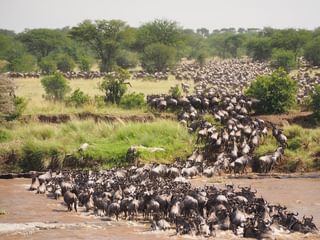
Often called the ‘Greatest Wildlife Show on Earth’, and with good reason! Well over 1 million Wildebeest migrate in a gigantic circular motion through the Serengeti in Tanzania and the Maasai Mara in Kenya. The huge herds follow the rains when the plains are abundant with nutrient rich grass – but also passing through the territories of lions, leopards, cheetah and other predators.
The wildebeest migration can be seen all year round but depending when you want to travel to see the migration will determine where you’ll see it. Below are just a sample of the highlights.
January – March. The majority of the migrating animals are in the southern regions of the Serengeti and Ngorogoro Crater in Tanzania. It’s a quieter time of year in terms of visitors but it’s just as spectacular when it comes to wildlife viewing. This is calving season when the immense herds are giving birth, it’s a remarkable experience.
April – June. The mass herds move north through the Serengeti. Depending when you travel will determine where in the Serengeti you’ll have the best opportunities.
June – October. This is when one of the most spectacular events of the migration occurs. Millions of wildebeest, zebra, and other plains game cross the Grumeti River (Tanzania) and the Mara River (Kenya). This season is full of drama – a real circle of life experience.
For more details, take a look at our complete guide on where, when and how to see the Wildebeest Migration.
The exact timings and location of the migration vary from year to year depending on where and when the rainfall occurs. But nonetheless, it's a phenomenon you'll relish and remember for years to come.
Favourite place to stay: Alex Walker Serien
Trip idea: Luxury Serengeti Migration Safari.

Where to go: Rwanda and Uganda
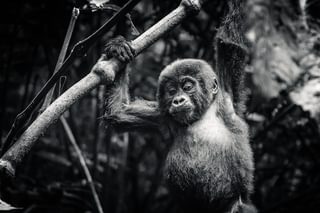
This is often touted as being one of the most rewarding and life-changing wildlife encounters you can enjoy. Thrilling, fascinating and humbling all at the same time – the chance to sit within meters of some of the last remaining mountain gorillas with whom we share 98% of our DNA is truly remarkable.
In small groups and only with a permit (which must be booked in advance) you can trek to find these critically endangered primates and watch them in their own habitat. The mothers will be grooming the babies, and some of the adolescents might be making mischief, whilst the huge silverback watches protectively over his family.
There are around 1,000 mountain gorillas left in the world and as the name suggests they live high up on the slopes of the Virunga Mountains in Rwanda, and the dense Bwindi Impenetrable Forest in Uganda. These are the best places in the world to see these incredible animals.
Favourite place to stay: Buhoma Lodge, Bwindi Forest, Uganda
Trip idea Rwanda; gorillas, primates and landscapes.

Where to go: Kenya, South Africa and Tanzania
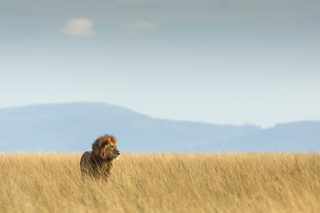
The lion is possibly the most iconic animal in Africa and always a highlight to see on safari. As an apex predator and the most social of the big cats, they tend to be easier to find than the other big cats and are often relaxed enough for you to sit and watch them snooze. The best time to see them being active is first thing in a morning as the sun is rising and late afternoon as the day starts to cool. Lion populations have been decimated over the last twenty years being reduced by over 40% but here are a few suggestions of where you might stand a good chance of seeing them.
Kenya/Tanzania – The Masai Mara Serengeti ecosystem is home to some of the highest density populations of lions left in the wild so you will have a great chance of seeing the king of the jungle in all his glory.
Savuti, Botswana – There have been many famous mega-prides of lions seen in the Savuti region of the Chobe National Park. This area has been synonymous with prides so large they have been known to prey on fully grown elephants and also compete with clans of hyena for food.
Kruger National Park, South Africa is home to a large population of lions, particularly the southern sections as well as in the private concessions of the Sabi Sands. Sightings here are fairly common so a trip here wouldn’t guarantee sightings but you’d have a great chance.
Favourite place to stay: Londolozi, Sabi Sands, South Africa
Trip idea: Kenya family safari adventure.

Where to go: South Africa and Zambia
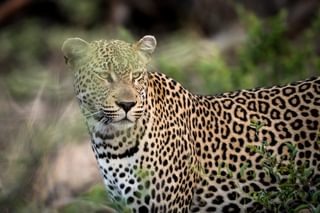
The most secretive of Africa’s big cats, many people spend several safaris hoping to see on. Leopards are most commonly found where there is dense vegetation for them to hide in, high-branched trees to climb onto, and an abundance of prey to stalk. If you are lucky, you might even spot a leopard dragging a kill up a tree to store safely for later!
As with all wildlife, seeing a leopard can never be guaranteed, but we’ll share our top spots to be likely to see one.
Sabi Sands in Kruger National Park is great because recent research has shown that it has the highest population density of leopards in the whole of Southern Africa. Also, the leopards are extremely relaxed around safari vehicles, making for exquisite photography opportunities.
Another great spot is South Luangwa National Park in Zambia which has earned itself the nickname ‘Valley of the Leopard’ because of the high number of sightings. Head to the lagoons, river plains and woodland for your best chances of seeing them. It is possible to do night game drives here which can greatly increase your chances of seeing a leopard and are an experience we’d highly recommend.
Favourite place to stay: Kafunta River Lodge, South Luangwa, Zambia
Trip idea: South Africa – Cape Town, Winelands and Safari honeymoon.

Where to go: Namibia, Kenya and Tanzania
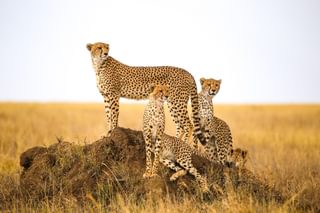
Cheetahs used to be widespread throughout Africa and the Middle East, and in ancient Egypt, cheetahs were sometimes domesticated and used for numerous things such as pest control and hunting. Now cheetah numbers are extremely threatened with around 7,000 left in the wild. The lightest and quickest of the big cats are actually adaptable in a wide range of habitats but here are some suggestions to give you the best chance of spotting these phenomenal animals.
Kenya and Tanzania – The combined ecosystem of the Masai Mara and Serengeti is the perfect habitat. Wide open spaces and plenty of prey for the cheetah to chase. In the Masai Mara, there is actually a coalition of five brothers who work together to bring down large prey.
Namibia is a stronghold for cheetahs and the home of the Cheetah Conservation Fund, located just outside of Otjiwarongo – they do pivotal conservation and research, working with local communities to help preserve these awesome cats.
Favourite place to stay: Okonjima Plains Camp
Trip idea: Northern Tanzania Safari and Zanzibar Beach.

Where to go: Kenya and Botswana
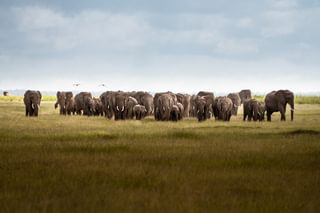
If elephants are high on your bucket list of animals to see then there is no shortage of places in Africa that you can travel to see the world’s largest land mammal.
Highly intelligent and highly emotive, its not surprising that seeing elephants in the wild is a special and humbling experience. Watching a herd of elephants, the way they interact with each other – including the odd squabble, how they work together, protecting each other as one big family and the immense bond they share is truly remarkable.
The best places to see large herds of elephants roam freely are Amboseli in Kenya and in Botswana, with the former lending itself to some of the most iconic Africa and elephant images ever being captured as from Amboseli you have the magical backdrop of Kilimanjaro looming behind.
Favourite place to stay: Porini Camp, Amboseli National Park, Kenya
Trip idea: Botswana Baobabs and Okavango Delta.

Where to go: Sao Tome & Principe and South Africa

Heading to coastal Africa, watching turtles nest and lay eggs is definitely one of the more tranquil wildlife experiences you can enjoy. Two destinations instantly spring to mind when it comes to ticking this off anyone’s bucket list: Sao Tome and Principe and South Africa’s Kwa Zulu Natal coastline.
Head to Sao Tome and Principe between the months of October and April, as this pair of charming islands located off the western coast of equatorial Africa host female turtles as they clamber up the beach under cover of darkness to lay their precious eggs. Small, remote with pristine beaches, perfect for four out of the five marine species of turtles to nest and lay their eggs.
The magnificent ‘Elephant Coast’ in Kwa Zulu Natal which is located on South Africa’s marvellously diverse eastern coastline is another great place to see turtles nesting and hatching with the latter usually occurring between January and February. This area is known as turtle country and with its pristine environment, it’s easy to see why loggerhead and leatherback turtles favour it as safe nesting ground.
Favourite place to stay: Thonga Beach Lodge, South Africa
Trip idea: Sao Tome & Principe Island Escape.

Where to go: Botswana and Zimbabwe
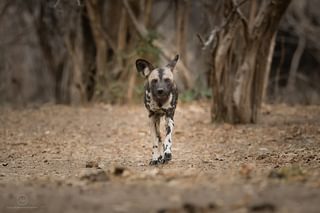
The critically endangered African wild dogs, also known as the painted wolf, are one of the most successful predators on land and seeing them in the wild is truly a special occasion. Watching a pack become active after a day of snoozing under the shade of a tree is a joyful experience – the way they interact with each other, reaffirming social bonds, playing and wrestling. If you are fortunate enough to witness a hunt it’s a remarkable feat of teamwork with wild dogs having astounding stamina to chase down their prey.
Because of their rarity, you need to head to the right places to give yourself the best chance of seeing them. Botswana and Zimbabwe have some of the highest and most stable populations with Botswana claiming to have around 30% of the entire worldwide population.
There’s a national park in Zimbabwe which is different to many others in sub-Sahara Africa. Mana Pools National Park is one of freedom, you can walk with relative ease (and of course caution), which makes for exhilarating experiences when you track, locate and spend time with these fantastic canines all done on foot.
Favourite place to stay: Vundu Camp, Mana Pools National Park
Trip idea: Affordable Botswana honeymoon.

Where to go: Kenya and South Africa

Kenya is the home of the original horseback safari and it offers and it offers a huge array of experiences which allows you to have intimate encounters with wildlife. Imagine riding through the open plains of Keyna along side of huge herds of wildebeest, journeys of giraffe and dazzles of zebra. Horseback safaris will enable you to connect closely with nature – you’ll also get closer to wildlife as they don’t see a horse as a threat as they do with people, you may actually get within touching distance but as with all wildlife, it’s not a good idea to actually do so.
You might be wondering about seeing predators from the saddle, professional guides and well-trained horses ensure the experience is at an optimum. These experience can last from a few hours to a few days depending on the type of adventure you’re looking for. It’s not uncommon for a safari lasting a few days offering fly-camping with luxury mobile camping in a very ‘Out of Africa’ style.
Favourite place to stay: Lewa Safari Camp, Kenya
Read more about a: Horse riding safari

Where to go: Kenya and Botswana
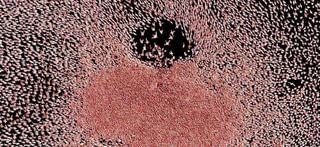
Lake Nakuru in Kenya is probably one of the most famous places to see these remarkable birds, but there is also a huge migratory population that visits the Makgadikgadi salt pans in Botswana and where you can enjoy a spectacular helicopter flight over thousands of pink flamingos. This is one of Africa’s avian feasts with huge numbers of flamingos arriving to feed on tiny shrimp and crustaceans which are usually dormant below the white salt crust until the waters stimulate their spawning.
Favourite place to stay: Jacks Camp, Botswana
Trip idea: Lake Elementei and Masai Mara.

Where to go: Cape Town, South Africa
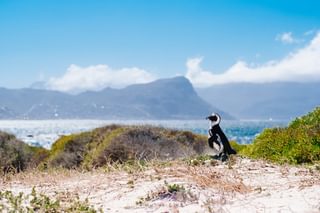
If penguins are on your bucket list than head to the famous Boulders Beach near Cape Town for a brilliant way to see these awesome seabirds up close. You’ll be amazed at how close these comical birds come up to you as they have become extremely used to human presence.
Thankfully, Boulders Beach lies within the Table Mountain National Park Marine Protected Area - which means the local beaches are safe, clean and the penguins themselves are protected.
Favourite place to stay: Welgelegen Boutique Hotel
Read more about seeing: Penguins at Boulders Beach

Where to go: Madagascar
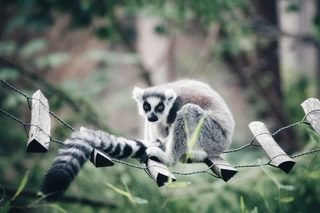
Think of lemurs and you’ll automatically think of Madagascar with its incredible diversity of flora and fauna which is found nowhere else on Earth. There are some great places in Madagascar from which you will have a good chance of seeing these remarkable creatures, as well as a whole host other endemic species with Andasibe National Park and Ranomafana National Park being great places to get your lemur fix. With over 100 recognised different species of lemur all located on Madagascar, it’s a true testament to the mind-boggling array of diversity that this fifth largest island in the world has to offer.
Favourite place to stay: Tsara Komba, Nosy Be Archipelago
Read more about experiencing: Lemurs in Madagascar

Where to go: Mozambique

If water sports float your boat and you love to dive, snorkel and want to see whales and dolphins then Mozambique is the perfect place to whet your appetite. Pristine beaches, crystal clear waters and boasting one of the largest protected marine environments in Africa makes for a hot spot of marine biodiversity.
Mozambique offers fantastic opportunities to see rare species such as whale sharks and has an abundance of coral and turtle species.
If you time your trip between June to August, it will coincide with a phenomenon known as the Sardine Run, which is the annual migration of huge shoals consisting of millions upon millions of sardines as they move north. Thousands of sharks, dolphins, and oceanic birds follow the sardines up the eastern coast of Africa. This is also when humpback whales migrate from their Antarctic home, making the long journey to warmer waters in the north to give birth. Diving and snorkeling is at an absolute premium during this time.
Favourite place to stay: Azura Marlin, Mozambique
Read more about: Diving in Mozambique

Where to go: South Africa
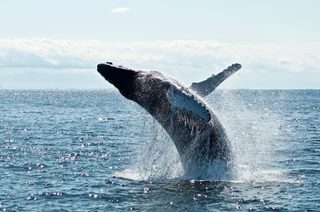
Southern Africa is blessed to have whale migration routes which traverse the coastlines which makes it a great place to tick off whale watching from your bucket-list. South Africa is one of the best destinations in the world, providing whale-watchers with spectacular displays of raw power and elegant water acrobatics.
At least 37 species of whales and dolphin can be found off the coast of South Africa with the most common sightings being southern right whales, humpback whales, several species of coastal dolphins as well as Bryde’s whale and even the rare orca.
Whale-watching territory in South Africa is vast, stretching from as far south as the Cape West Coast (Cape Peninsula) all the way up to north Kwa Zulu Natal near the Mozambique border. The best time of year to see these mighty marine mammals is generally between May and October, depending on species and location.
Favourite place to stay: Makakatana Bay Lodge
Read more about: Whale watching on the Kwa Zulu Natal Coastline

Where to go: Bale Mountains National Park, Ethiopia
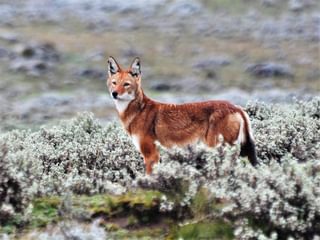
Ethiopia may not instantly spring to mind when thinking about a wildlife experience, but it is a destination that needs to be included and considered up there with the very best. It is hugely diverse with plenty of endemic species, one of which is the Ethiopian Wolf. It is Africa’s rarest and most threatened carnivore with only around 500 left in the wild so it really is a special treat to see them in their natural environment, high in the Ethiopian mountains.
Slender with long legs and distinctive red coat they’re actually closely related to grey wolves.
Favourite place to stay: Bale Mountain Lodge
Trip idea: Wildlife on the roof of Africa.

Where to go: Botswana and South Africa

Have you ever seen photos of meerkats climbing all over people?! These furry little friends are surprisingly friendly and you can visit and sit with habituated gangs of meerkats in the dry, arid regions of Botswana and South Africa - where these tough little creatures thrive and can live in groups of up to forty strong. More often than not, meerkats will get very close to and sometimes even use you as a lookout post if you get close to their burrow.
Favourite place to stay: Tswalu Tarkuni
Trip idea: Kids adventure holiday in Botswana.

Best places to go: Botswana, Kenya and Namibia
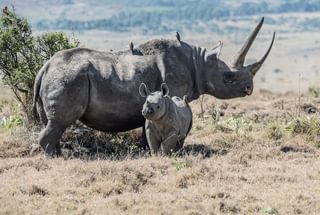
This is up there with some of the best wildlife experiences you can enjoy. In northern Kenya, there is a very special community-based project which takes you on a walking safari to track black rhino. Not only is it a thrilling adventure, it also enables guests to actively contribute to the conservation of this critically endangered and iconic African species. With less than 6,000 black rhinos left in the world, this is a remarkable experience you’ll treasure in your memory for many, many years. Walk with Samburu guides as they share authentic local views and teach you about the conservation work needed to help protect these marvelous animals.
Every year, hundreds of rhinos are poached for their horns which are thought to contain medicinal properties in some cultures. Rhino poaching is a serious crime and the valuable horn can fetch huge amounts of money on the black market. But with projects such as the one in the Sera Community Conservancy, there’s a glimmer of hope that rhinos will continue to be around for many years to come.
Favourite place to stay: Saruni Rhino Camp, Kenya
Read more about: Tracking black rhino is Kenya

Where to see: Botswana
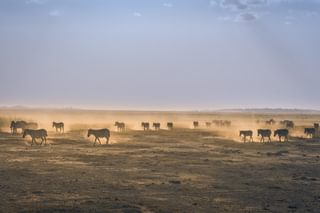
Botswana’s Nxai Pan and Makgadikgadi National Parks host the second largest movement of zebra on the continent – with the first being the Great Wildebeest Migration between the Serengeti in Tanzania and the Maasai Mara in Kenya, but don’t be deterred, it’s just as fascinating.
This seasonal, rain dependant migration begins usually between March and April when between 25,000 and 30,000 zebra congregate and migrate across mile and miles of shimmering white salt pans, stretching as far as the eye can see. The arduous journey takes up to six months with the herds spending a couple of months at the Boteti River amongst the lush grazing and plentiful waters before making the journey back north around late October through November. This lesser know migration is perfect if you are looking for a safari adventure where you will probably enjoy the feeling of being the only visitors in the wilderness for miles around.
Favourite place to stay: Nxai Pan Camp, Botswana
Trip idea: Botswana under canvas.

Where to see: Kasanak National Park, Zambia
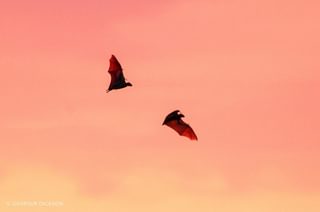
Between the months of October and December each year, one of Africa’s most spectacular wildlife secrets occurs in Zambia. It’s the world’s largest mammal migration with over 8 million straw-colored fruit bats arriving from the Congo to feed on the wild musuku fruits in Kasanka National Park in central Zambia. This phenomenon of nature is unique only to Kasanka and the park also enjoys prolific birds and other wildlife. It may be off the usual safari routes but that’s all part of its charm and this works perfectly when combined with a visit to either Kafue or South Luangwa National Parks.
Favourite place to stay: Wasa Lodge, Kasanka National Park, Zambia
Trip idea: Kasanka bat migration.

Where to see: Botswana and Zimbabwe
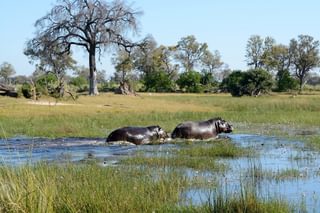
Canoe safaris are a fantastic way to experience hippos and crocodiles – immediately two places spring to mind when thinking about the best places to do this which are Botswana’s Okavango Delta and also along the mighty Zambezi river in Zimbabwe. These safaris are beautifully relaxing. Away from the rattle of a vehicle engine, imagine gliding down waterways and being able to appreciate having close encounters with hippos, crocodiles, elephants and many other iconic African species.
Favourite place to stay: Gunn's Concession, Okavango Delta
Trip idea: Young Botswana explorers.

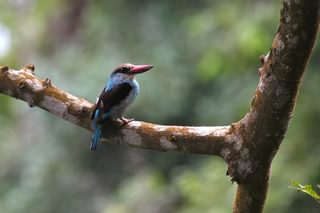
If birds are your passion, Africa has no shortage of destinations to flock to. The continent is vast and so is the array of species you can hope to see with endemic, speciality species in just about every corner. From the tiny yet beautifully coloured Little Bee Eater all the way up to the Martial Eagle (Africa’s largest eagle) – there’s plenty to see. And if you’re not a keen birder, once you go on safari and see the myriad of fascinating species for yourself, you’ll find a new passion. From the thick jungles of Uganda to the open savannahs of the Serengeti and the flowing rivers of the Zambezi River, there are so many options for you to think about. Also the time of year plays a major factor – during the Southern African summer, a whole myriad of migratory birds travel south making it a very colourful time of year to visit.
Uganda, remarkably has well over 1000 different bird species both resident and migratory making it an absolute ‘must’ of a destination if our feathered friends are a passion. You’ll certainly be kept busy taking photos and ticking off the huge array of species here.
South Africa is the final destination for many migratory birds who have travelled south for winter. Time a journey here and you could count up to an impressive 850 different species with over 700 being resident. There are some fabulous lodges in South Africa which love to cater for birding enthusiasts.
Favourite place to stay: Ngala Safari Lodge, South Africa
Trip idea: Ultimate Uganda.

Where to go: Kenya
Horse riding safaris have always been popular, but in certain areas of northern Kenya there are possibilities to try something a little different. A camel-back safari. It’s a great opportunity to escape the constraints of a vehicle and be connected to nature, and a safari with this elegant desert animal allows you to get closer to plains game such as zebra, giraffe, and ostrich. An increasingly popular alternative to the traditional vehicle-based safaris and a great way to explore the African wilderness where sometimes vehicles can’t go. There is a plethora of choices for activities ranging from a couple of hours ride to overnight camping as well as much longer camel train safaris.
People might not automatically think Kenya has an association with camels, I’m sure your mind jumped to the Sahara Desert but camels have been part of tribal life for thousands of years with tribes like the Samburu often using them to move camps through wild untouched landscapes.
Favourite place to stay: Samburu Intrepids Camp, Kenya
Read more about: A camel riding safari experience

Best place to see: Swakopmund, Namibia
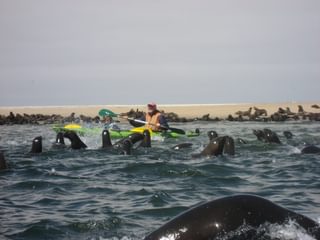
The Namibian coastline is famous for many reasons and it’s healthy population of seals is a wildlife highlight. It’s possible to take a sea kayak safari and experience high numbers of seals up close. You’ll also be treated to a myriad of sea birds such a pelican - and if you’re really lucky you may even get to spot whales and dolphins too.
Favourite place to stay: Strand Hotel, Swakopmund
Read more about: A seal kayaking experience in Swakopmund

For more inspiration, take a look at our 26 favourite safari holidays, our best African honeymoon ideas or our top family safari holidays.
As with all wildlife experiences, it is imperative to remember that you are a guest in their ‘home’. You’re entering their world and experiencing a part of their life. Treat wildlife with respect and never put it in a position where it feels threatened. The old saying ‘take nothing but photos and leave nothing but footprints is a great way to remember how to view wildlife ethically.
Booking a safari holiday is contributing to conservation. The park fees you pay when visiting directly generate money to help preserve wildlife and wilderness areas. The accommodation you stay in creates jobs for many local people which gives them a greater appreciation to value the wildlife the importance of conserving it. So, we’d just like to say a big thank you on behalf of our partners oversees for helping to preserve wildlife for future generations.
and start planning your tailor-made holiday

Travel Expert